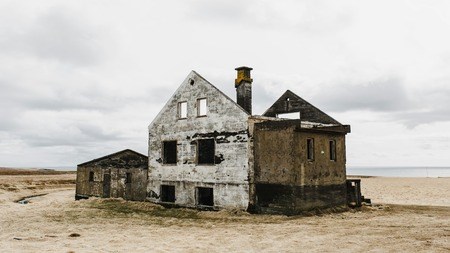As dramatic and outlandish as it may sound, Sick Building Syndrome is a very real problem which affects the well-being of countless people around the world. The term was coined by the World Health Organisation in 1986, when it estimated that between 10 and 30 percent of newly built office buildings in the West had indoor air problems. Although the phrase is still most commonly used to describe commercial spaces, there are things that can affect our health within a home environment and the most frequent culprit is mould.
Steve Kay, CEO of Home Inspection Services , says most homeowners have the impression that mould is nothing more than a nuisance. Unfortunately however, there are over 100,000 mould species, some of which are more harmful than others. "Mould invades homes all over the country and most people can handle low-level exposure. However, the problem with mould is that it multiplies when it has access to moisture and organic material like food, soil, wood, paper, leaves and fabric. In reality, what is often considered a mere annoyance could well be making you and your family sick." So what sort of moulds are there, and where do they grow?
Attic Mould
Dark places that hold moisture are ideal places for mould to thrive. Common attic mould can potentially affect those who are allergic to mould. These people may break out in a rash, experience cold-like symptoms such as coughing or a runny nose, and may experience respiratory problems. Check attics often to prevent and detect mould growth.
Toxic Mould - Black Mould
Kay says that the term 'toxic mould' is somewhat misleading. "House mould in itself is not toxic, but it does produce toxins that are harmful to a person's health. Toxic mould exposure can lead to diseases that are mild in some cases but fatal in others. How a person's body reacts to toxic mould exposure depends on the strength of their immune system. People with a weakened immune system are the ones most easily compromised." There are three types of black mould that are less common but which are considered very serious health hazards.
Toxic mould such as Stachybotrys, Acremonium, and Memnoniella require soaked cellulose (wood, paper, and cotton products) to grow. Such moulds have white edges and may appear slimy when wet. Even if the mould in your home is not toxic, it will still stain, discolour, and deteriorate the surface on which it is growing.
What health problems can be attributed or linked to mould in the home?
Kay says moulds produce irritating substances that may affect sensitive individuals. He adds that allergic reactions are the most common physiological response to mould. They may happen immediately, or develop over a period of time after exposure. Both growing mould and mould spore may lead to allergic reactions. Symptoms of mould allergy may include sneezing, a runny nose, coughing, wheezing, teary and red eyes, and skin irritation or rash. Asthma attacks may be triggered by mould or mould spores in asthmatics who are allergic to mould. Even in some non-allergic individuals, mould can irritate the eyes, skin and airways. Some people may develop severe reactions to mould exposure, including fever and difficulty in breathing. People with compromised immune systems or those with chronic lung diseases can develop serious infections of the lungs due to moulds.
It is not possible to predict the severity of the health risks associated with mould in the home. Degrees of susceptibility will vary from person to person and the risk may also depend upon the extent of the infestation and the exact type of mould present.
It is highly recommended that buyers look for evidence of mould growth when viewing a property. "While some mould is visible to the naked eye, nine times out of ten more serious infestations are hidden in the back of cupboards or in ceiling spaces. "Removing mould is not as simple as one might think and the costs involved can be enormous," says Kay. "Those who are concerned should consider bringing in a home inspector to determine the extent of the problem and to best advise on what should be done to remove the mould from the property."



